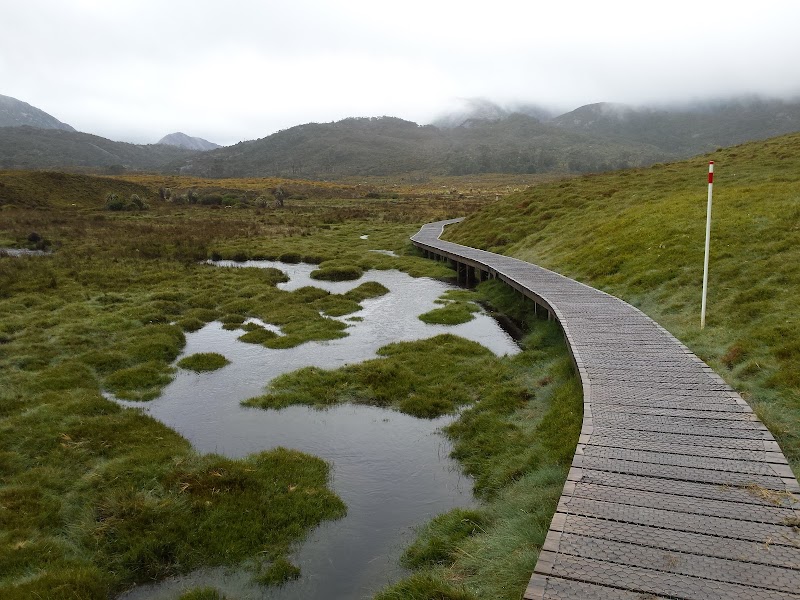
Savor the Flavors of Bridport Taste: Tasmania’s Premier Food and Wine Festival
Experience the vibrant Bridport Taste Food and Wine Festival in Tasmania, where fresh regional produce meets top-tier cool-climate wines along the stunning northern coast. Discover how to plan your visit for the best culinary adventure in a welcoming seaside town.
Book Accommodations Early
Bridport is small and festival demand is high; secure lodging weeks in advance to avoid last-minute shortages.
Use Local Transport Options
Venues are spread out—rent a bike or car to navigate comfortably or check shuttle services during the festival.
Stay Hydrated Throughout Tastings
Tasmanian sea winds and many tastings can dehydrate you; keep water on hand to pace your sampling responsibly.
Wear Comfortable, Non-Slip Footwear
Expect gravel and vineyard paths alongside town streets; sturdy shoes improve comfort and safety during site hopping.
Savor the Flavors of Bridport Taste: Tasmania’s Premier Food and Wine Festival
Bridport Taste, held every March in the charming coastal town of Bridport, Tasmania, delivers an immersive experience that blends fresh regional flavors with captivating local hospitality. This festival invites food lovers and wine enthusiasts to engage directly with producers, restaurateurs, and artisans whose craft is fiercely tied to this rugged northern Tasmanian coastline. It’s not just a festival—it’s a journey through Tasmanian agriculture and gourmet skill, all set against the vivid backdrop of a town that dares visitors to taste, sip, and savor.
Bridport’s vineyards and vineyards’ proximity to the sea shape the festival’s offerings, with crisp cool-climate wines ranging from boutique Pinot Noir to aromatic Rieslings pushing their quality forward each year. Meanwhile, food stalls and events scatter through the town, presenting fresh seafood, artisanal cheeses, and local veggies, each ingredient echoing the wildness and resilience of this place’s earth and water.
Practical planning ensures you make the most of the festival and surrounding area. The festival typically spans three days, packed with tastings, cooking demonstrations, winery tours, and workshops. Festival events spread across venues from vineyard tasting rooms to the Bridport Sailing Club, so being mobile is key. Consider renting a bicycle or car for flexibility, since the event venues stretch along and just outside the town center.
Bridport has a laid-back vibe, and accommodation fills quickly, so early booking is advised. Options range from cozy guesthouses to self-contained cottages. Keep hydration close—Tasmania’s coastal winds can dry you out quicker than expected, especially during midday tastings. Footwear should be practical; expect some unpaved surfaces especially at vineyard outings.
While the festival dishes up the highlights of Tasmania’s north coastal food scene, it also extends an invitation to explore the surrounding wilds, where the ocean and forests engage in a slow dance of change. The raw beauty of nearby beaches offers striking photography opportunities while local farms give a closer look at the source of many dishes.
Sweeping views, spirited wine, and hands-on food experiences come together here with clarity and ease. Bridport Taste is designed not just to fill your belly and glass, but to enrich your understanding of Tasmanian terroir and food culture—an adventure for the palate grounded in the practicalities of travel and discovery.
Nearby Trips
All Adventures
Boat Charters
Water Activities
Adventures near Bridport, Tasmania
Discover the unique and memorable adventures that make Bridport, Tasmania special.
Frequently Asked Questions
What types of wine can I expect at Bridport Taste?
Bridport Taste showcases cool-climate wines predominantly Pinot Noir, Chardonnay, and Riesling, reflecting northern Tasmania’s unique terroir. Many producers focus on boutique, hand-crafted vintages with distinct coastal qualities.
Are the festival events family-friendly?
While the festival’s core focus is food and wine geared towards adult palettes, many venues encourage families with local produce markets and daytime activities that can be enjoyed with children.
Is the festival accessible for people with mobility needs?
Most main venues in town are accessible, though some vineyard tastings include uneven gravel or natural surfaces. Contact event organizers ahead to discuss specific requirements.
Can I purchase local products to take home?
Yes. Many producers sell packaged wines, preserves, and artisanal foods at festival events or from their cellar doors, making it easy to bring a taste of Bridport back with you.
What is the best way to get around during the festival?
Walking covers town venues well, but renting a bike or car is advised for visiting scattered vineyard events and more remote tastings.
Are there any outdoor activities near Bridport worth exploring during the festival?
Bridport’s nearby beaches and coastal trails offer rugged beauty and tranquil spots for reflection between tastings. Exploring the Charmichael Beach or Tomahawk Bay brings a refreshing change of pace.
Recommended Gear
Water Bottle
Stay hydrated to handle Tasmanian winds and alcohol tastings comfortably.
Comfortable Walking Shoes
Necessary for navigating gravel, vineyard terrain, and paved areas around town.
Sun Hat and Sunscreen
Protect your skin during long outdoor tastings under the Australian sun.
Light Jacket or Layered Clothing
Prepare for sudden temperature shifts and coastal breezes.
Local Insights
Hidden Gems
- "Tomahawk Beach - Quiet spot with tidal pools revealing marine life at low tide"
- "North Bridport Lookout - Provides panoramic views of coastline rarely crowded"
Wildlife
- "Eastern Rosellas frequent the festival gardens, brightening the atmosphere"
- "Swamp wallabies often spotted near vineyard edges at dusk"
History
"Bridport’s agricultural roots date to the early 19th century, with many family farms now contributing to the region’s food ecosystem integral to the festival’s offerings."
